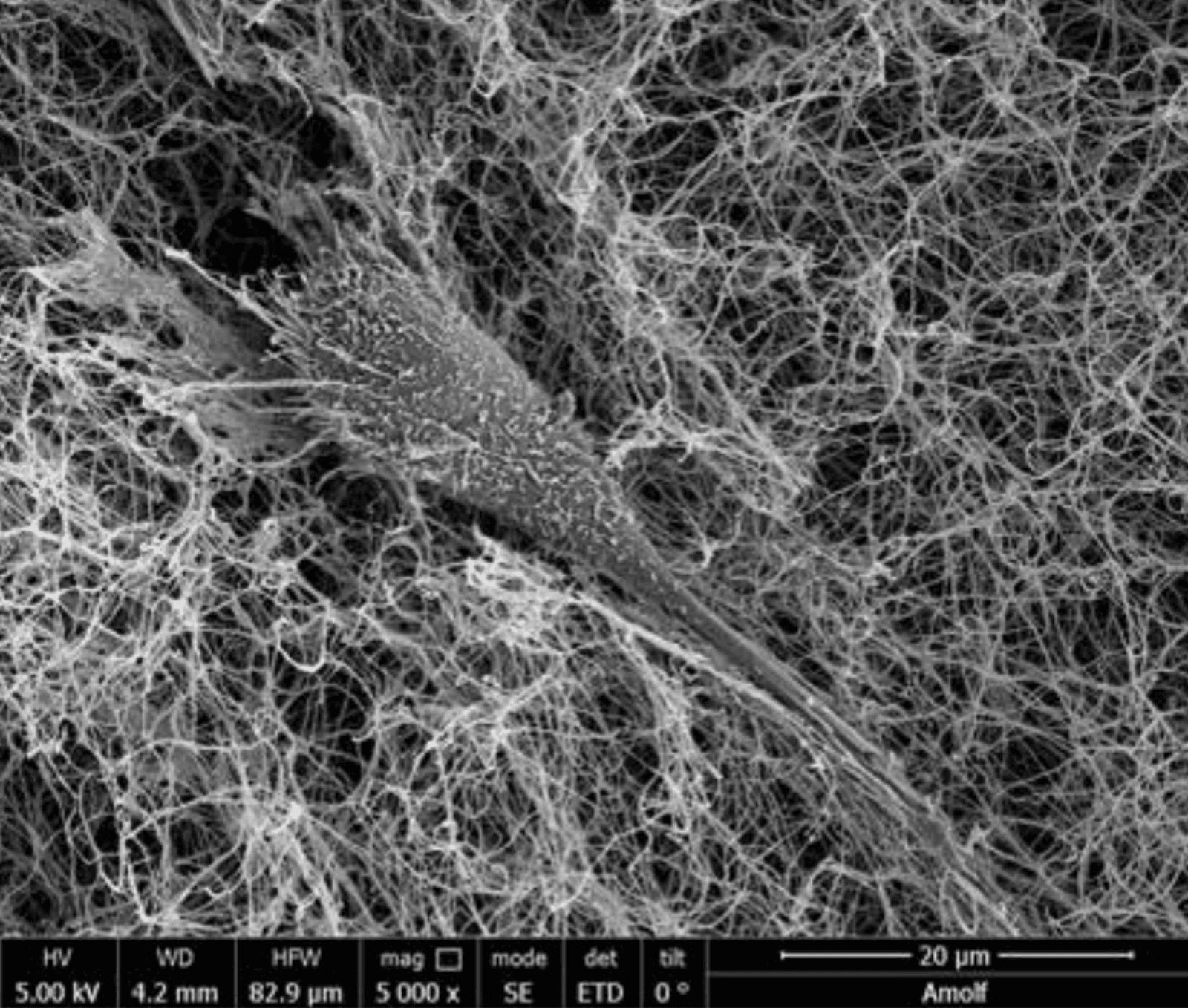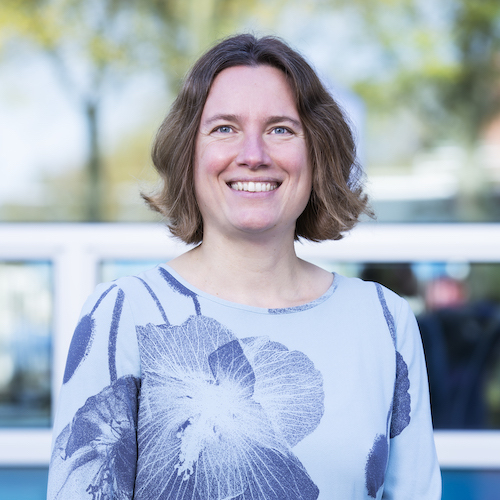The Challenge of Complexity
by Alan S. Brown
At the Kavli Institute of Nanoscience at Delft, new co-director Gijsje Koenderink wants to build synthetic cells, learn how cells turn into tissues, and build quantum computers.

The Author

Gijsje Koenderink, the new co-director of the Kavli Institute of Nanoscience at Delft University of Technology and principal investigator within its Bionanoscience Department, has always been curious about everything. Her interest in the physics of living matter was first piqued during her undergraduate studies in chemistry, when she had her first research experience in the lab. After graduating with a Ph.D. in physical chemistry and completing a postdoc at the Vrije Universiteit Amsterdam and Harvard University, she began teasing out the mechanical behavior of living things at AMOLF, a Dutch research institute devoted to the physics of complex functional matter. After 13 years there, she joined the Kavli Institute of Nanoscience at Delft (KIND) in 2019.
Here are some of her thoughts on the future of KIND and bionanoscience:
Why did you decide to leave AMOLF and join KIND?
Koenderink: I was very happy at AMOLF, but after 13 years in one place, it was time to experience a new environment. Science is a very creative profession, and I find that interactions with people nurture my creativity. When you are exposed to new people, it helps you think about new directions.
What makes KIND unique?
Koenderink: The institute has two main research themes, quantum nanoscience and bionanoscience. Its researchers are very international, with many new tenure track hires. This gives us a nice mix of established principal investigators and young people with new ideas.
KIND is also extremely ambitious. In bionanoscience, for instance, many of us are part of a program to build a synthetic cell. The quantum nanoscientists want to build a quantum computer that brings together material science and hardcore quantum physics expertise. These ambitious goals require contributions from different disciplines and create a really inspiring environment.
Let's focus on the bionanoscience side. What makes it stand out?
Koenderink: One thing that makes our department special is size. We currently have 17 principal investigators. Together, we can really examine how life works at the nanoscale from many different angles. We go all the way from single molecules to cells and to tissues. You simply do not find many places in the world that have such a huge concentration of common research interests in one department.
One of the Bionanoscience Department's themes involves the molecular machinery of cells. What is KIND working on?
Koenderink: We focus on the fundamental mechanisms of life, on how non-living biomolecules make living cells. Our research into synthetic cell biology is a nice example of this. We can tackle this problem only because we have learned so much about how proteins and DNA molecules function individually. Now we want to understand how they work together in a cell. We can do that by reconstituting these systems in a synthetic cell and integrating their functions together.
How would this work?
Koenderink: Many KIND members are part of the Netherland's Building a Synthetic Cell (BaSyC) consortium to build a basic cell. We define this as a cell that grows and divides autonomously. It has a metabolic system to generate energy so it can make its own building blocks and remove waste. It must have a synthetic genome to replicate and a way to divide so it can distribute the duplicated genome across the two daughter cells.
Reconstituting these systems is a big challenge. We have made a lot of progress on different individual modules over the past five years. Now we want to combine these modules. We want our metabolic system to provide the energy and building blocks for the cellular machinery that requires it for cell growth and division. Likely, we will first create a synthetic cell that is dependent on external help to make nutrients, and eventually make it more autonomous. This is probably what happened in nature as well, where many organisms depend on others to supply them with nutrients or building blocks. I think it is realistic that we could create a synthetic system that grows this way in maybe a few years.
You are also interested in how cells organize themselves into tissues and organs, right?
Koenderink: Yes, this is another important research topic at KIND. One example is Dimphna Meijer, a neurobiologist who is trying to understand how brain neurons process information by creating networks. Our brains have about 100 billion neurons, and we struggle to understand how such complex systems work. She is developing electrodes to measure neuronal signaling in artificially grown human brain organoids. Unraveling their networks remains difficult, but together with her quantum nanoscience colleagues in KIND she has ideas about using quantum computing and modeling to map the flow of information in these brain organoids.
What other types of research go on in the department?
Koenderink: We continue to study single molecules. We have people like Cees Dekker and Chirlmin Joo, who are developing nanopores to sequence the composition of individual proteins.
Others are developing new tools. Kristin Gruβmayer, for example, is working on super-resolution microscopes that image objects smaller than the wavelength of light. And Arjen Jakobi is pushing the limits of electron microscopy of cryofrozen biomolecules so he can reconstruct how they self-organize as they perform tasks in the cell.
As KIND new co-director, what do you see as your greatest challenge?
Koenderink: Short-term, our biggest job is to recover from the pandemic's impact. It's important for scientists to interact with each other, and KIND has always organized events where new ideas and collaborations can originate. For the past two years, the pandemic limited us to online meetings. This has been especially hard on young people. They missed the scientific exposure and social life they would normally have had at a critical point in their academic career. This was especially true for international students and post-docs, who did not have a social network here. So, we want to get our personal interactions back on track again.
What about new research? Where do you think KIND will be in five years?
Koenderink: I would like to think that we will have made significant progress with our synthetic cell and on quantum computers and software. And I hope we will have surprised ourselves and have also evolved completely new ideas that we wouldn't even dream of right now.